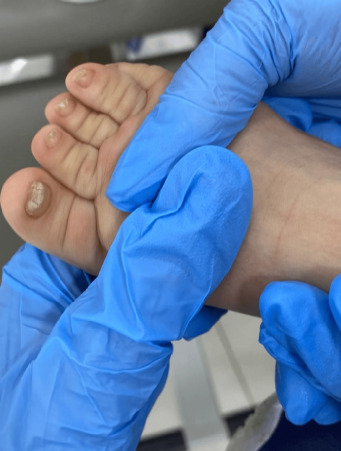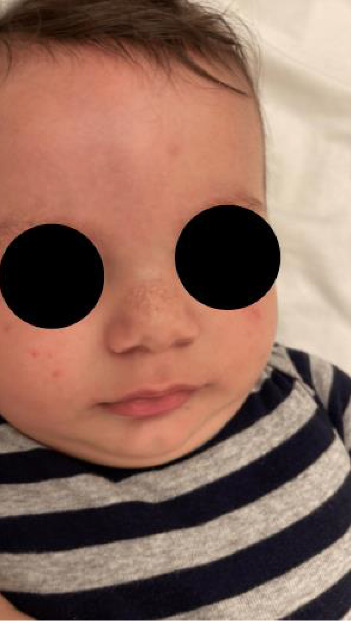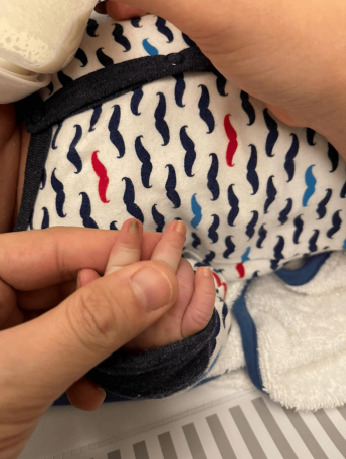A Newly Documented Rare Case of Pachyonychia Congenita II in a Three-Month-Old Baby.
Q3 Medicine
Case Reports in Dermatological Medicine
Pub Date : 2025-07-12
eCollection Date: 2025-01-01
DOI:10.1155/crdm/8876939
引用次数: 0
Abstract
We report the case of a three-month-old boy presenting with dystrophic nails, hyperhidrosis, congenital natal teeth, and milia-like lesions on the nose, without a family history of pachyonychia congenita (PC). Genetic testing confirmed a heterozygous pathogenic mutation (c.275A > G) in the KRT17 gene, establishing the diagnosis of PC Type II. PC is a rare genetic disorder affecting keratinization, with variable clinical manifestations that can complicate early recognition. This case highlights the importance of molecular testing and dermatologic expertise in diagnosing and managing PC.



新记录的罕见病例先天性厚甲甲虫II在一个三个月大的婴儿。
我们报告一个三个月大的男孩,表现为指甲营养不良,多汗症,先天性先天性牙齿和鼻子上的粟粒样病变,没有先天性厚甲病(PC)的家族史。基因检测证实KRT17基因存在杂合致病突变(c.275A > G),确定PC II型的诊断。PC是一种罕见的影响角化的遗传性疾病,其临床表现多变,可能使早期识别复杂化。本病例强调了分子检测和皮肤科专业知识在诊断和管理PC中的重要性。
本文章由计算机程序翻译,如有差异,请以英文原文为准。
求助全文
约1分钟内获得全文
求助全文
来源期刊

Case Reports in Dermatological Medicine
Medicine-Dermatology
CiteScore
1.50
自引率
0.00%
发文量
24
审稿时长
15 weeks
 求助内容:
求助内容: 应助结果提醒方式:
应助结果提醒方式:


